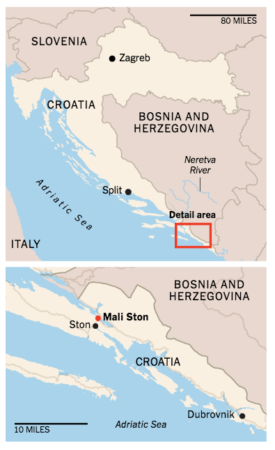

Unrestricted transport of commercially important alien oysters have resulted in numerous unintentional introductions of pathogens, parasites and pest The sea, a hub of shipping, is exceptionally susceptible to ship-borne organisms, whether the non-indigenous species occur in fouling communities or ballast. Lagoonal environments, and those are heavily impacted by exotics, but much of the Mediterranean littoral has its share of exotics. Mariculture of nonindigenous shellfish predominates in the northern Mediterranean orientalis also infects the blue mussel, Mytilus edulis. Both species are able to infect the indigenous oyster, Ostrea edulis Ostreae, a branchial parasite, were recorded from the shell-farming lagoons of Languedoc in 1979. orientalis, an intestinal parasite, and M.

Two parasitic copepods, Mytilicola orientalis and Myicola ostreae, originally from Japanese waters, have been accidentally introduced withĬ. The mussel forms byssal mats on the surface of soft sediments, thus altering native benthic assemblages. It arrived in the shell-farming lagoons of Languedoc in the 1980's and in the Adriatic. The small mytilid mussel, Musculista senhousia is native to East Asia. A recent small-scale experimental study shows modification of faunal assemblages resulting from settlement of the limpets. In high densities it may compete with commercial shellfish crop for space and food and may enhance silting. The slipper limpet, Crepidula fornicata, native to the Atlantic coast of North America, was first recorded in the Mediterranean in 1957 from mussel beds near Toulon it has since arrived in the lagoons of Languedoc. muticum has locally displaced the indigenousĬystoseira barbata by blocking light and thus inhibiting the recruitment of the native species. Indigenous species are now nearly absent amongst the dense stands of gigas, has rapidly covered artificial substrates and negatively affected native algae. Sargassum muticum, successfully introduced into the coastal lagoons of Languedoc and northern Spain withĬ. Unrestricted transport of commercially important alien oysters have resulted in numerous unintentional introductions of pathogens, parasites and pest species: a comprehensive compilation of marine macrophytes introduced into the Mediterranean by way of oyster farming includes 15 species 10 are native to Japan. Ruditapes philippinarum, a native of the western Pacific, was introduced into the lagoons of Languedoc (France) in the late 1970's, to the Venice Lagoon in 1983, and in 1985 to other parts of the Italian coast, including Sardinia.Įrythrean penaeid prawns make up most of the shrimp catches along both Egyptian and Israeli Saccostrea commercialis, a native of coastal New South Wales, was introduced to the Venice Lagoon in the mid -1980's, and was recently found off Turkey. gigas was imported to the Adriatic lagoons of Italy, its larvae were collected off Croatia, and has since been introduced to many Mediterranean locales from Cyprus to Tunisia. The Pacific oyster,Ĭrassostrea gigas, native to northeastern Asia, was introduced to the Mediterranean coast of France by the late 1960's. angulata was introduced along the French Mediterranean coast, as well as the Tyrrhenian, Ionian, and Adriatic coasts of Italy.

Large-scale transplantations of oysters were initiated only in the 20th Century:Ĭ.

The so-called "Portugese" oyster,Ĭrassostrea angulata, was probably transported from Japan by the Portugese. But it wasn't till the 16th Century that the first transoceanic transplantation have taken place. it was deemed worth while to send to the end of Italy, to Brindisi, for oysters". Pliny the Elder, the Roman prefect turned naturalist, tells us that "Oyster ponds were first invented by Sergius Orata on the Gulf of Baiae. Galil National Institute of Oceanography POB 8030, Haifa 31080, Israel Exotics in the Mediterranean - Bioindicators for a sea change Bella S.


 0 kommentar(er)
0 kommentar(er)
